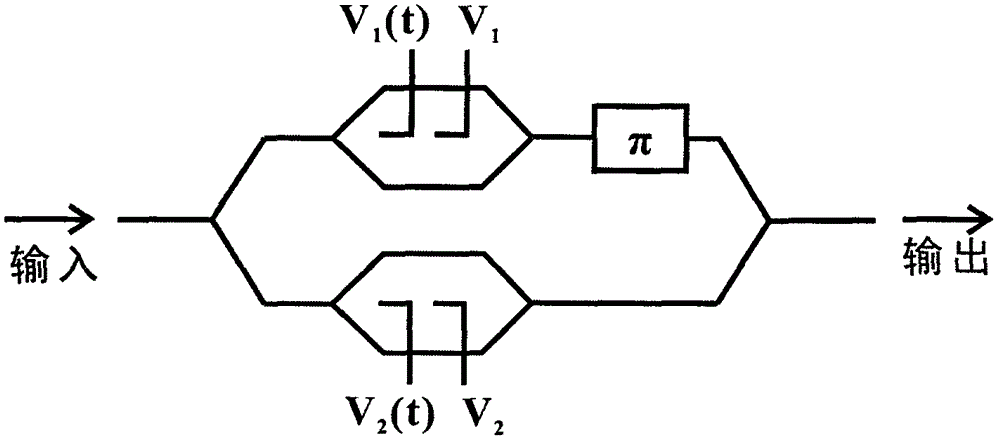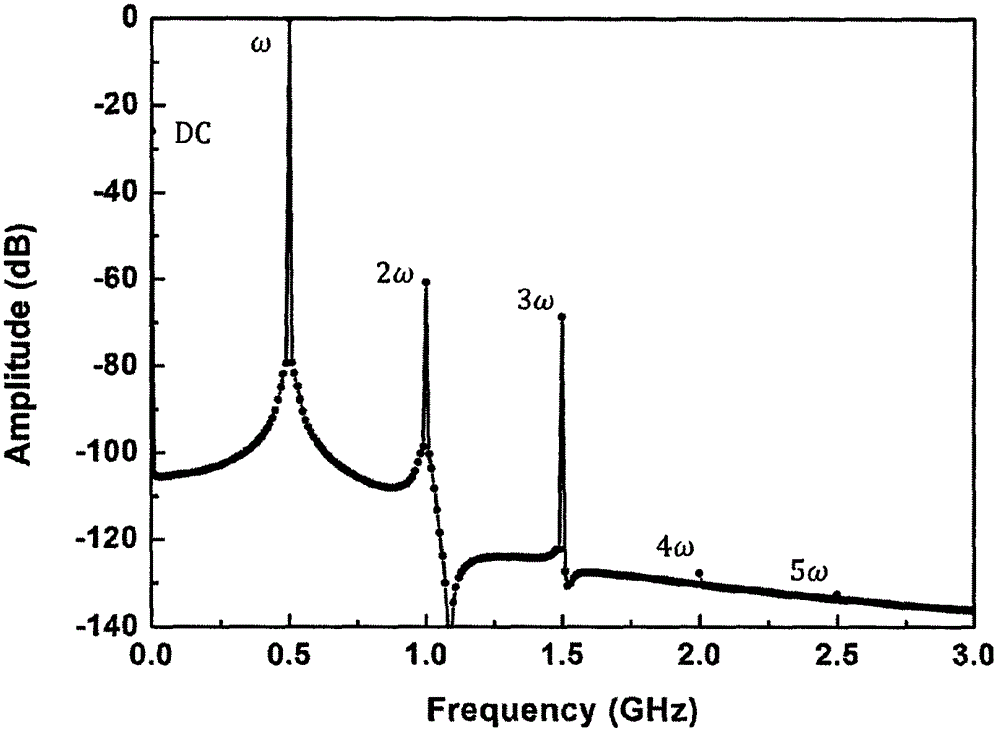Method and device improving microwave signal time stretching linearity
A microwave signal and time-stretching technology, which is applied in optics, instruments, optical analog/digital converters, etc., can solve problems such as the lack of linearization methods for broadband optical time-stretching systems, improve linearity and dynamic range, and eliminate Third harmonic and third order intermodulation distortion, effects of increased sensitivity
- Summary
- Abstract
- Description
- Claims
- Application Information
AI Technical Summary
Problems solved by technology
Method used
Image
Examples
Embodiment
[0035] Combine below figure 1 , take Matlab software simulation result as example to further illustrate the present invention.
[0036] The light source of this embodiment adopts a passive mode-locked fiber laser. The central wavelength of the output optical pulse is set to be 1555nm, and the pulse width is 210fs. After inputting the dispersion compensating fiber 2 of 1.3km, the mapping between wavelength and time is formed due to the effect of dispersion, and the output linear chirp Chirped light pulses. Next, two directional couplers 3 and 5 are connected, and the dual parallel modulator 4 is connected to the upper branch of the two directional couplers, and the two lower ports of the directional couplers 3 and 5 are directly connected. The power ratios of the upper and lower branches of the input and output of the dual parallel modulator 4 are both set to 88.9% and 11.1%, and the microwave signal of 5GHz is respectively loaded on the upper and lower MZM modulators accordin...
PUM
 Login to View More
Login to View More Abstract
Description
Claims
Application Information
 Login to View More
Login to View More - R&D
- Intellectual Property
- Life Sciences
- Materials
- Tech Scout
- Unparalleled Data Quality
- Higher Quality Content
- 60% Fewer Hallucinations
Browse by: Latest US Patents, China's latest patents, Technical Efficacy Thesaurus, Application Domain, Technology Topic, Popular Technical Reports.
© 2025 PatSnap. All rights reserved.Legal|Privacy policy|Modern Slavery Act Transparency Statement|Sitemap|About US| Contact US: help@patsnap.com



